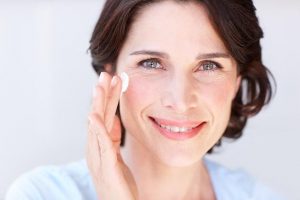Dozing off on the beach, forgetting to put your lotion on or enjoying the sun’s rays too extensively during your lunch break: Well, did you get a sunburn this summer? After a few days, the reddening of the skin has usually subsided and the itching and burning sensations are forgotten. But: Every sunburn increases the risk of skin cancer.
The number of new cases has been rising steadily in Germany for decades. In the meantime, skin cancer is the most common type of cancer in this country, with an average of one in four getting it once by the age of 75. The good news: If it is recognized in time, the chances of recovery are usually good. And: You can do a lot in everyday life to protect your skin. Together with DAK-Gesundheit we clarify.

These are the most dangerous skin enemies:
Sun
The following applies to both malignant melanoma (known as “black skin cancer”) and the much more common white skin cancer (technical term: non-melanoma skin cancer) and other, rare forms: UV radiation and, in particular, sunburn caused by it, in which radiation penetrates into the deeper skin layers, increases the risk of disease.
The depletion of the protective ozone layer in the earth’s atmosphere increases the risk. Sufficient sun protection (with cream and clothing) and breaks in the shade are therefore important to protect your skin not only on summer but also on sunny autumn and winter days. The UV index, which indicates the current strength of UV radiation and recommended protective measures, provides orientation aid in assessing the current risk of sunburn .
Solariums
Not only natural but also artificial UV radiation is harmful to the skin. Experts therefore recommend avoiding tanning in the solarium. Those who still value tanned skin can alternatively consider high-quality self-tanning creams.
Genetic factors

About ten percent of melanoma patients have family members who also have black skin cancer. However, not only the risk of the disease is inherited, but also the skin type, which can play a role in the individual skin cancer risk: The risk of skin cancer is higher in people with light skin, freckles and particularly many moles and moles (more than 50) – also because their skin is usually more sensitive to the sun.
Risk professions

Studies have shown that certain professions have an increased risk of skin cancer. These include: roofers, sewer and construction workers, carpenters and workers in agriculture. In these fields of activity, one is not only exposed to UV radiation for a long time, protection through clothing, risk education and other preventive measures often leave a lot to be desired.
For example, it is helpful to put work into the early morning or evening hours, set up awnings and wear long, airy clothes.
Tattoos

In science, there is still disagreement about whether the color that gets into the body via the skin when tattooing promotes cancer. Because meaningful long-term studies on the subject are still missing. One thing is certain, however: large tattoos make it more difficult to recognize dangerous skin changes in time.
Protect and observe skin

Skin protection in everyday life is easy – if you strictly observe the following rules:
- In strong sunlight, apply sun cream with a sun protection factor of at least 20 to all exposed skin areas – at least to the face, neck and hands. Depending on how sensitive the skin is, better SPF 30 (for less sun-sensitive skin) or 50 (for sensitive skin). In normal autumn sun or in spring this is not absolutely necessary.
- If you sweat or have been swimming: reapply before going out in the sun.
- Additionally protect your head and body with sunglasses, hats and long clothing.
- Avoid the sun at lunchtime (11 a.m. to 2 p.m.), it’s best to do sports in the morning or evening.
In addition, it is important to keep an eye on moles and other skin changes. Not only regular check-ups at the dermatologist’s (see below) help, but also careful self-observation, for example with the help of the ABCDE rule: If you notice any of the following changes in a mole, you should see a doctor as soon as possible:
Asymmetry : A patch of skin has lost its regular shape or a new patch appears that is not oval or round.
Boundary : The edges of the stain appear washed out, frayed or jagged.
Color : A stain is not monochrome, but changes between light and dark or pink.
Diameter : At the widest point, the skin patch is larger than five millimeters
Evolution : The stain has changed in some form in the last three months, for example its size and / or color.
Early detection saves lives
Skin cancer screening is an important component in skin cancer prevention . The doctor examines the skin from head to toe for abnormal changes and, if cancer is suspected, takes tissue samples that are examined in the laboratory.
From the age of 35 you should have this examination carried out every two years. DAK-Gesundheit not only pays the full costs for this, but also subsidizes two skin cancer screenings every two years for all insured persons aged 17 and over.
